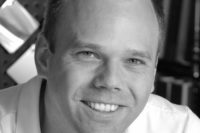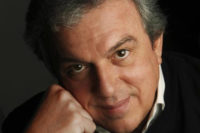Irsida Bejo is an independent architectural designer and urban researcher in Metro Detroit. Bejo graduated from Lawrence Technological University with a bachelor’s in Architecture and received her master’s in Architecture from the University of Michigan. She was awarded the Fullbright Fellowship after graduate school, and is currently one of the organizing leaders of Architecture for Humanity in Detroit.
Recently, she discussed her future plans with W&C.
W&C Architect: How many years do you have in the profession?
Bejo: Four years
W&C Architect: What is your work history in this field?
Bejo: I started my professional career working for large and small architectural firms in metro Detroit focusing mostly on automotive, retail, mixed use and renovation projects. After graduate school, I was awarded a Fulbright Fellowship to Albania (Southwest Balkans) to conduct my research on the state of architecture, urban design and historical preservation in post-communist societies. Currently, I am an independent design consultant and one of the organizing leaders of Architecture for Humanity—Detroit.
W&C Architect: Where did you go to school?
Bejo: I went to Lawrence Technological University for my B.S. in Architecture and University of Michigan for my M.Arch.
W&C Architect: Did you have a specialization?
Bejo: I have always been interested in the design aspect of architecture. In graduate school my focus shifted more towards spatial research and exploration of disruptive thresholds such as digital media and mobile publics. As a Fulbright Fellow, while working with international non-profits and local communities, I became active in public interest design, investigating post-communist public space and policy, as well as developing strategies to protect and promote cultural heritage.
W&C Architect: Do you approach architecture from an artistic or functional starting point? Are the two concepts exclusive?
Bejo: In my opinion, the complexity of architectural and urban design, with all its geo-political and socio-economic implications calls for a balance of the two. Some projects might focus more on one than the other, but I don’t think it’s one or the other; then we’d be crossing into utopian territory. Even though I tend to be a bit more abstract in my own approach, I strongly believe that a successfully designed place, both product (building) and experience should be aesthetically and pragmatically engaging.
W&C Architect: If any, who are your role models?
Bejo: I don’t have a role model per se, but there are a few people whose work and extensive research has inspired, interested and intrigued me: Saskia Sassen, Paul Virilio, Gilles Deleuze, Bruno Latour, J.G.Ballard, Reyner Banham, Lebbeus Woods, and a few others.
W&C Architect: What projects, other than your own work, do you find inspiring?
Bejo: I think it is easy to find inspiration in architecture, within the field itself or when fueled by other disciplines. What motivates and continuously restores my faith in the profession, is that lasting inspiration I get from projects that make a difference where it is most critically needed: rebuilding post-conflict communities, reconstructing disaster areas, providing shelter to displaced populations, and many more.
W&C Architect: How many buildings have you designed?
Bejo: Although I have been involved in all stages of architecture process as part of a team, I have yet to design and construct a building from scratch to completion. I am more interested in designing ‘moments’ that deal with spatial relationships on an intimate scale (within the building) or complex systems on a larger scale. On my own, I have only done installations that conceptualize, speculate and materialize these kinds of spatial and structural experiences.
W&C Architect: If you had to choose one to represent your work, what project would you choose?
Bejo: The most recent project I did with Architecture for Humanity – Detroit, as part of the Detroit Design Festival, is PARK(ing) Day Detroit. PARK(ing) Day is an annual international event where artists, designers and citizens temporarily transform metered parking spots into community-designed social spaces. The installation I designed was a mix of DIY street furniture (crates/astroturf) and flowers arranged to spell out P A R K across the lot. As people started to populate the space and interact with each other more, they were taking apart and moving the pieces around as tables, seats or containers, ultimately taking them home to recreate ‘their’ own park somewhere else.
W&C Architect: What are your guiding principles when designing a structure?
Bejo: I use them more as variables then guidelines, to establish relationships that will feed the aesthetic, pragmatic and structural potential of what I am designing.
W&C Architect: If you could have any building to redesign—anywhere in the world—which would you like to address?
Bejo: This is an interesting challenge. There are many buildings that fit this description and I can name a few (Bilbao for example), but I don’t think redesigning them would fix some of the deeper implications, lessons learned or public perceptions they have created and probably maintained. I’d actually like to see how they will be preserved, if at all.
W&C Architect: What types of products interest you?
Bejo: Too many. I think 3-D printing is revolutionizing the relationship we have with products already and I can’t wait for the opportunity to customize my own creations.
W&C Architect: What types of products in the wall and ceiling industry really interest you?
Bejo: Performative products that engage each other, the space and users not only as architectural elements (such as wall or ceiling) but as augmented interfaces.









Report Abusive Comment